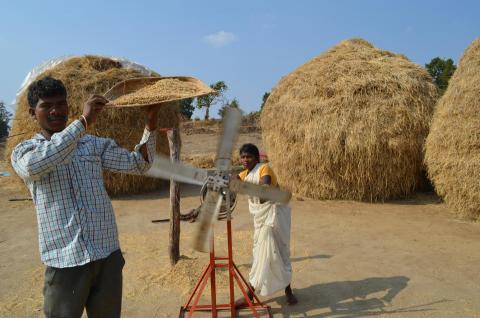When Indians have embraced modern technology more recently, pollution from fertilizer has gone down, but rice takes a lot of water. And "natural" rice is not great nutritionally. Nutrient deficiencies are already widespread in India today--30 percent or more are anemic--and many regions are chronically water-stressed.
But it doesn't have to be that way. By comparing yield, water use, and nutritional values such as calories, protein, iron, and zinc of six major grains currently grown in India (rice, wheat, maize, sorghum, and pearl and finger millet) researchers in a new analysis found that found that rice is the least water-efficient cereal when it comes to producing nutrients.

Credit: Kevin Krajick
Replacing rice with maize, finger millet, pearl millet, or sorghum could reduce irrigation water demand by 33 percent, while improving production of iron by 27 percent and zinc by 13 percent.The potential benefits of replacing rice with alternative crops varied between different regions, depending on how much the crops could rely on rainfall instead of irrigation.
There are concerns that Indians may not be willing to incorporate more of these alternative cereals into their diets but if it were really preferable to starve, India would not need to subsidize rice. But they do. India's state-run Public Distribution System (PDS) subsidizes rice and wheat to support smallholder farmers and low-income households and those farmers would readily switch to more nutritious, water-saving cereals like millet and sorghum.
Some Indian states are have already started pilot programs to grow more of these crops, and the Indian government is calling 2018 the 'Year of Millets.'





Comments